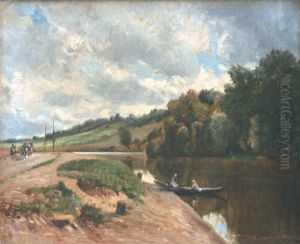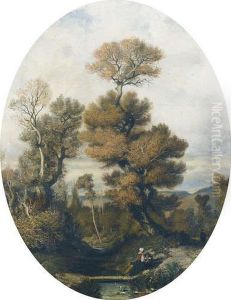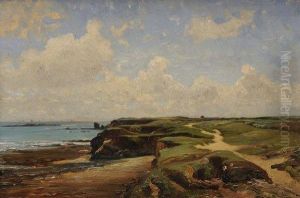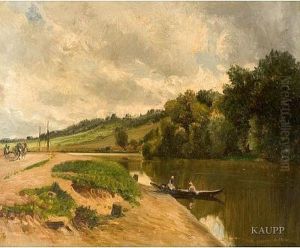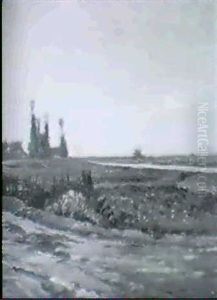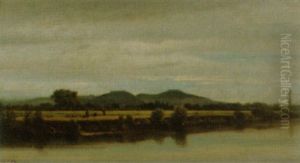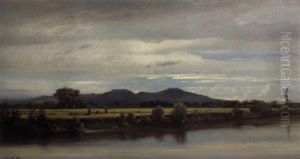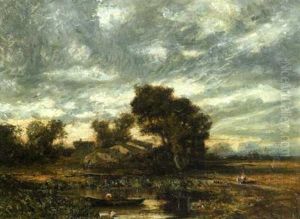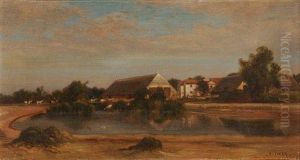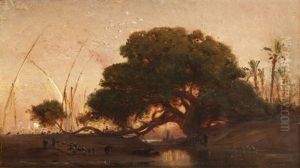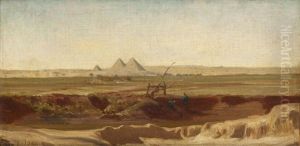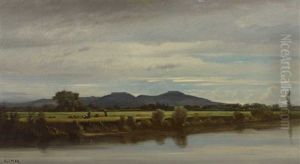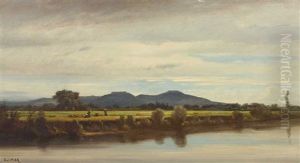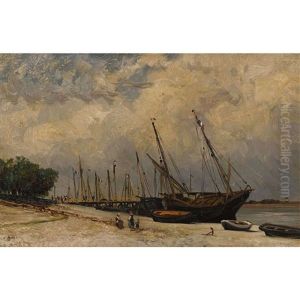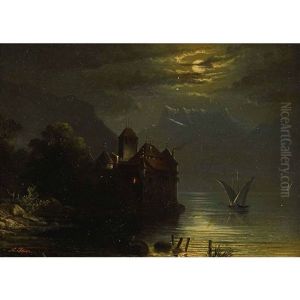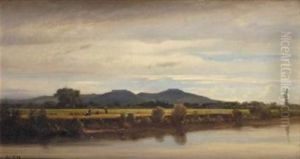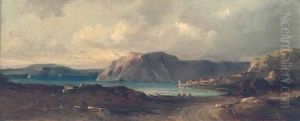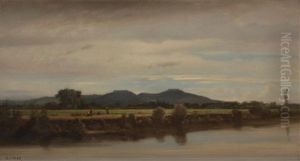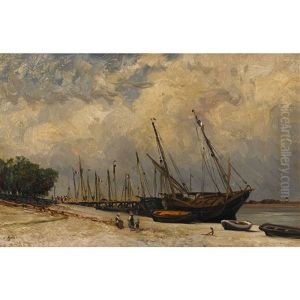Edouard Auguste Imer Paintings
Édouard Auguste Imer was a French artist born in 1820 in the scenic town of Lons-le-Saunier, located in the Jura region of France. His life spanned much of the 19th century, a period rich in artistic evolution and revolution in Europe, particularly in France where the foundations of modern art were being laid. Imer's contribution to art, though perhaps not as widely recognized as some of his contemporaries, is nonetheless valued for its unique qualities and historical significance.
Imer's artistic journey began in the traditional academic setting, which was typical of the era. He was trained in the classical tradition, which emphasized the importance of drawing and the study of antique and Renaissance masters. However, like many artists of his time, Imer was also influenced by the changing artistic movements around him, including Romanticism and Realism. These influences can be seen in his choice of subjects, which ranged from historical and mythological scenes to more contemporary and everyday life scenes, reflecting the Realist movement's focus on depicting the reality of human existence without idealization.
Despite the lack of extensive documentation on Imer's personal life and professional career, it is known that he exhibited his work in various salons and galleries, a common practice among artists seeking recognition and patronage. His works were appreciated for their detail, composition, and emotional depth, qualities that were highly valued in the art of his time.
Imer's death in 1881 marked the end of a career that was contemporaneous with some of the most significant developments in 19th-century art. Though he may not have achieved the fame of some of his peers, Édouard Auguste Imer's works remain a testament to the rich artistic landscape of 19th-century France. His paintings, though perhaps not as well-known today, contribute to the broader narrative of French art history, offering insights into the eclectic styles and themes that characterized this dynamic period.
